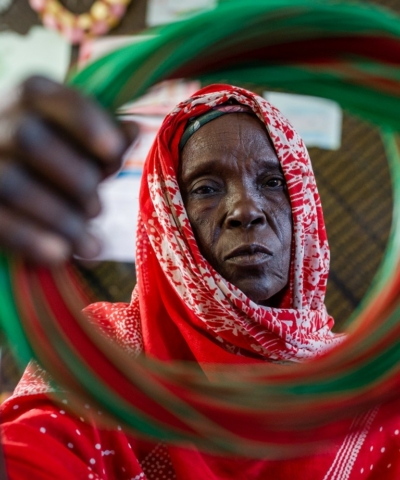News
Myanmar: a magnitude 7.7 earthquake hits the country, our team is mobilized on site
The quake, whose epicenter was located near Mandalay, the country's second largest city, was felt in several Asian countries, causing damage as far away as Thailand. Dozens of weaker aftershocks continue to occur across the country, completing the collapse of the most fragile buildings. It was the most powerful earthquake to hit the country since 1912.
Publié le 09/04/2025 | Temps de lecture : 5 min
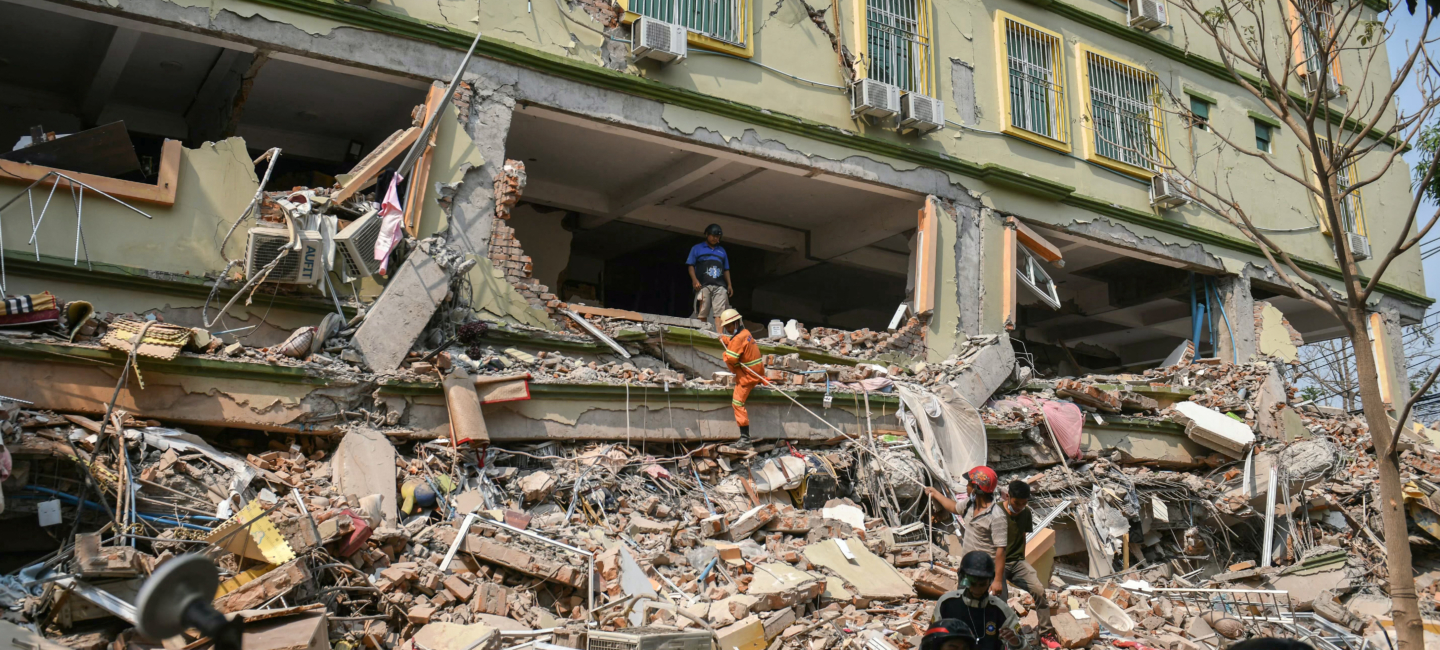
One week on,
the death toll is still provisional
By April 4, more than 3,000 people had been killed and 4,700 wounded, numbers that were rising steadily as rescue workers made their way to isolated villages.
In Sagaing, a town near Mandalay with a population of around 300,000, 90% of buildings are reported to have been destroyed. The airports in Mandalay and Naypyidaw, the capital, are no longer operational. Hospitals, some damaged but functional, are overwhelmed by the influx of wounded.
10,000 buildings have been destroyed, including homes, schools, bridges and roads. Some buildings are still collapsing. Thousands of historic buildings have also been partially or totally damaged, including 436 pagodas.
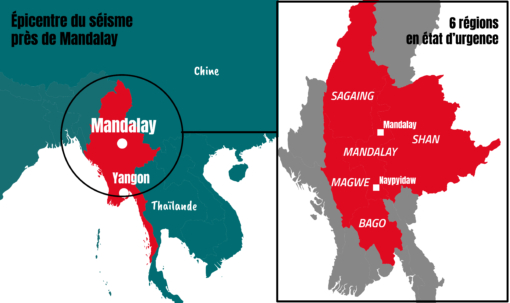
Humanitarian aid delayed
In view of the extent of the damage, a state of emergency has been declared in 6 regions (Sagaing, Mandalay, Naypyidaw, Bago, Magway and north-western Shan), and the ruling authorities have requested assistance from the international community.
The destruction of roads and bridges, as well as damage to communications infrastructure, has made access to the worst-affected areas extremely difficult for humanitarian workers.
Some health facilities are still functioning, but are completely overwhelmed and facing shortages of electricity, water and medicines. Limited access to health care for the wounded can lead to significant risks of infection and complications.
At the same time, the destruction of sanitary infrastructures, the heat, and the lack of sanitation at water points run the risk of epidemics of water-borne diseases.
In addition to medical aid, there is an urgent need for food, water and shelter in the worst-affected areas. Many people are sleeping outdoors with minimal protection, either because their homes have collapsed, or for fear of an aftershock completing the collapse of already fragile structures.
Our emergency
response
Despite this deteriorating context, Première Urgence Internationale teams, who have been present in Myanmar for 40 years, have deployed to meet the most urgent needs. Our response is focused on health, rapid needs assessment and the provision of essential services, particularly in Mandalay.
On March 31, our teams opened a mobile clinic in Mandalay to treat the first patients. They were thus among the first operational humanitarian actors on the ground.
Between March 31 and April 4, our teams provided primary healthcare to more than 500 patients and distributed essential kits.
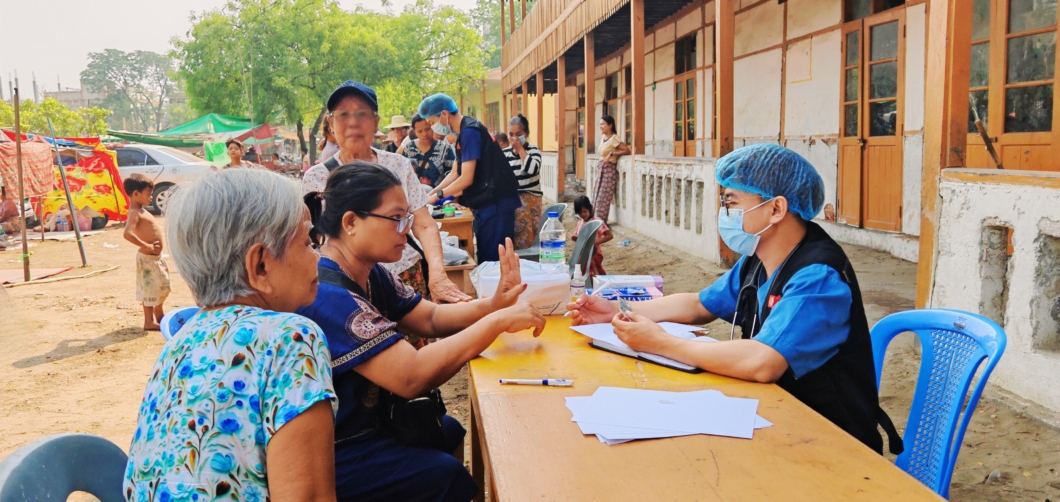
Overlapping
crises
The humanitarian consequences of the earthquake have exacerbated the difficulties of a country already in crisis for many decades, where almost 20 million people were already in need of humanitarian assistance in 2025.
There are 3.5 million* internally displaced people in Myanmar as a result of the multiple conflicts between the ruling military junta and various armed groups. Of these displaced people, an estimated 1.6 million* live in the central and north-western regions of the country, the areas hardest hit by the earthquake.
Living conditions continue to deteriorate after years of internal conflict, a succession of natural disasters and a military coup in February 2021.
For 40 years, our teams have been supporting vulnerable populations by providing primary healthcare, nutrition, sexual and reproductive health, HIV prevention, sexual and gender-based violence, food security, and water, sanitation and hygiene services. They also have an emergency response mechanism for natural disasters, epidemics, etc.
With 160 employees based in three regions, Première Urgence Internationale provides direct aid, as well as through local and international partners, to those most in need.
*source : HCT-UNCT
Our intervention in pictures
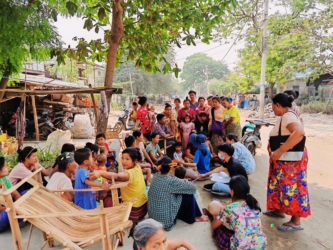
Rapid needs assessment session in Mandalay on April 1, 2025
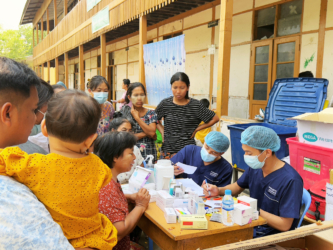
Mobile clinic primary care consultation on April 3, 2025
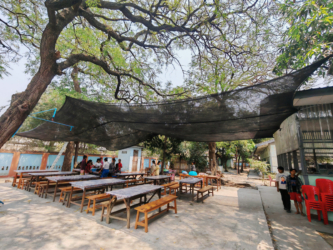
Installing a roofing to protect against the heat, Mandalay
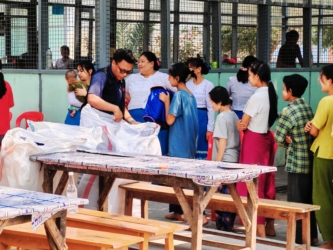
Distribution of essential goods kits
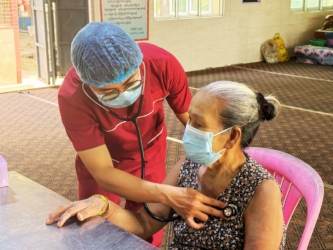
Primary health consultation in a mobile clinic on April 1st, Mandalay
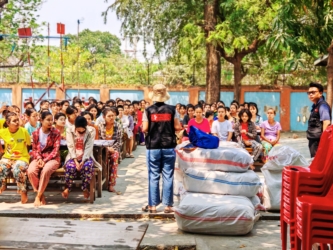
Awareness session on aftershocks and presentation of hygiene kits with distribution, Mandalay



